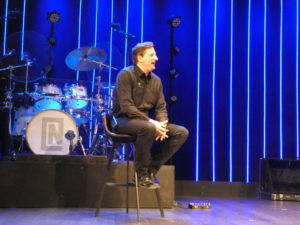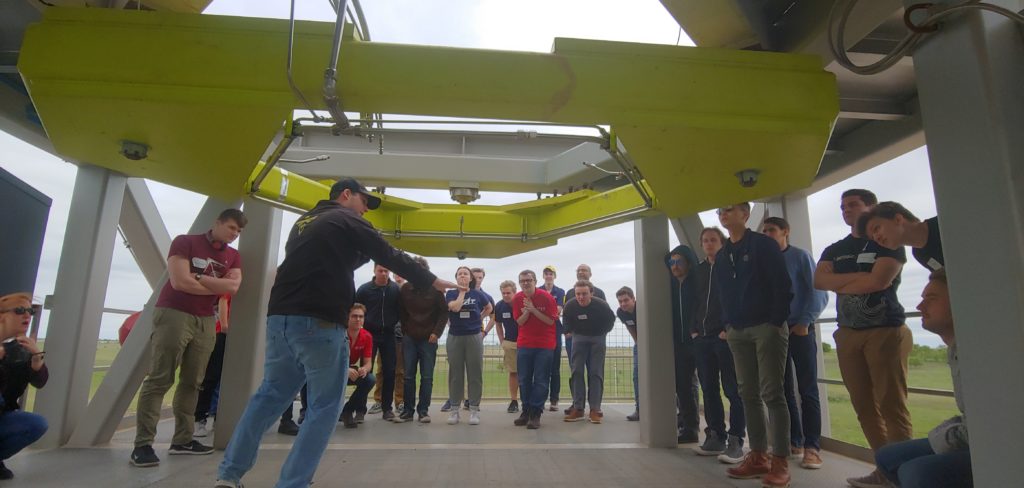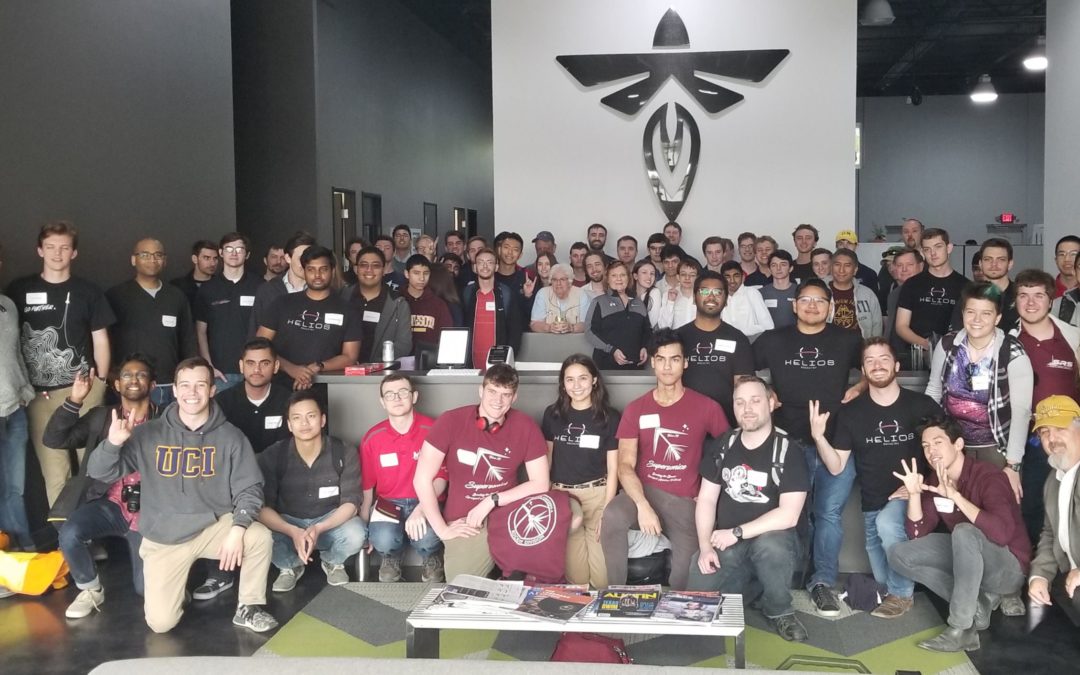Firefly Aerospace, Inc., welcomed aspiring aerospace innovators to their Cedar Park, Texas headquarters on March 30 for briefings, tours and an engine hot-fire demonstration. Seventy-five students from 14 universities participating in the the Base 11 Space Challenge got an inside peek at one of the country’s ambitious “new space” pioneers.

Firefly CEO Tom Markusic speaks to students
Firefly CEO Tom Markusic kicked off the day sharing the promise and perils of the rapidly evolving “new space” industry. His message of “Increasing access to space by lowering the cost” resonated with the students.
“The approach is to be creative and passionate about what we’re doing, and to rapidly design, build and test without fear of failure,” said Markusic. “That’s the New Space paradigm.”
The students are participating in this paradigm, as they compete for more than $1 million in prizes in the Base 11 Space Challenge. The challenge’s largest prize purse will be given to the first team to safely and successfully launch a liquid-fueled rocket to 100 kilometers, the edge of space known as the Von Karman line.
“Why do we do this? Space is really captivating to everyone,” Markusic said. “There’s something fundamentally out there that’s drawing us.”
Audience members, who came from as far away as Vienna, Austria, British Columbia, North Carolina and Michigan, needed no convincing that space exploration is captivating.
An important purpose of the gathering was to discuss safety issues as the teams move from strictly designing their rockets in Phase 1, to actually building and testing their rocket engines. Co-chair of the Base 11 Space Challenge Safety Council, Adam Trumpour, identified important safety issues specific to “hot-fire” testing and Firefly engineers added valuable information about their approach to processes, procedures and operations during engine hot-fires.
“The Firefly demonstration was truly an experience like no other,” said Rosniel Castro, the Safety Officer for the team from the University of South Florida. “It’s a rare opportunity to be able to ask an engineer in the field about a system in question and have them respond as if we were just another scientist in the field.”
The highpoint of the day was the visit to Firefly’s engine test site where guests got an up-close look at the control center, manufacturing, integration and test stands at their ever-growing state-of-the-art facility.
“My favorite part was definitely the tour of the Firefly test site,” said Nathan Parker, a student at Florida Institute of Technology. “I am from the space coast, so I am used to seeing all of these massive space facilities taking up miles and miles of land, so it was very refreshing to see a small, self-contained, efficient facility that is capable of equally amazing things.”

Firefly engineer explains key elements of the test stand to Base 11 Space Challenge participants.
At the site, students witnessed a hot fire test of the company’s second-stage, kerosene and LOx-powered engine, Lightning, which has enough power to reach low earth orbit. The test fire created an impressive light show for the crowd standing a safe distance away, not to mention a chorus of audience ooohs and aaaaahs.
As the students return to their campuses, they turn their focus to the second — much more challenging — phase of the Base 11 Space Challenge, where they will build and test their own liquid-fueled rocket engines.
For more about the Base 11 Space Challenge, visit www.base11spacechallenge.org.

